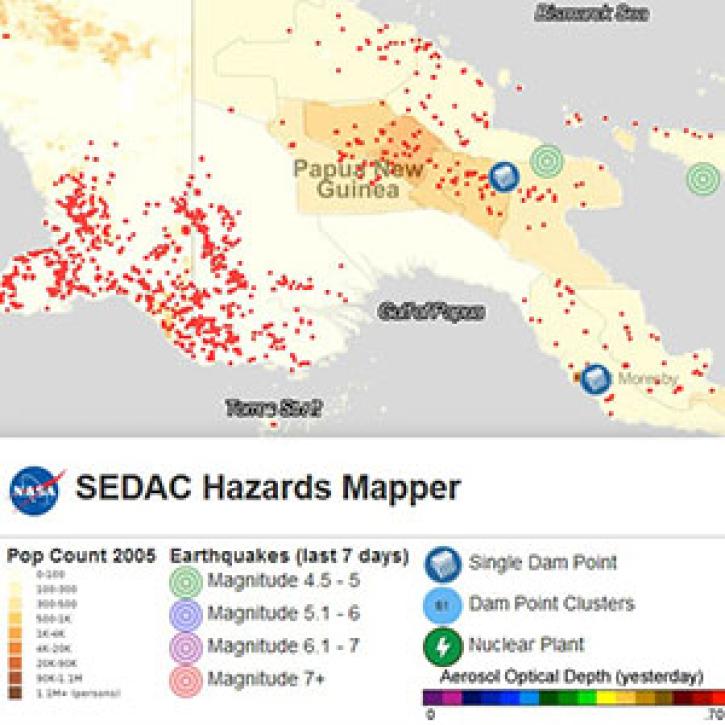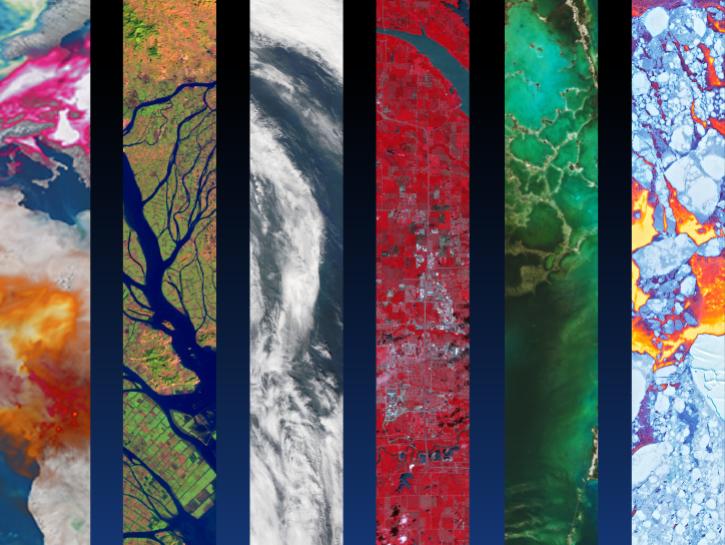The SEDAC Hazards Mapper enables users to visualize data and map layers related to Socioeconomic, Infrastructure, Natural Disasters, and Environment and analyze potential impacts and exposure. The web app mashups layers from various sources including SEDAC, NASA LANCE, NASA GIBS, USGS, NOAA, ESRI, and others.
The population count data for 2015 can be visualized as a map layer in the Hazards Mapper. The population estimates are obtained using SEDAC Population Estimation Service (PES), which is an OGC compliant Web Processing Service (WPS).
Hazards Mapper Example Use Cases
- You are a correspondent for a popular newspaper. You are at your home in leafy green Palisades, NY, when you get a call from the editor about a breaking story. There is a transformer fire at the Indian Point nuclear power plant. You load the SEDAC Hazards Mapper and locate Indian Point, and you set up a buffer of 50km around the plant in order to calculate the population that might be affected should the problem grow worse.
- You are a health researcher inspecting a wildfire burning in Central America. You turn on the NASA LANCE “Fires” layer. You are interested in the plume of smoke, measured by MODIS aerosol optical depth (AOD) and how many people may be affected by elevated AOD levels; so you turn on the NASA GIBS “Aerosol Optical Depth” layer. You draw a circle around the plume to estimate the population.
- You are an international humanitarian organization representative and you learn about the Nepal earthquake while having breakfast at home. You access the mapper, turn on the USGS “Earthquakes” layer and locate the epicenter of the largest magnitude quake. You then draw a polygon around the Kathmandu Valley to identify the number of people living in the valley in order to estimate the number of people who might be displaced. You then use this information to calculate how many tents will need to be sent for an airlift to Nepal.
- You are engaged in post-earthquake risk assessment for the Tohuko Earthquake in 2011. You are in the field, and you want to quickly identify how many dams or nuclear power facilitates might be impacted by the quake and the associated Tsunami. You draw a circle that is 50 km in radius from Namie and identify six dams and two nuclear power facilities and get an estimate of the population. You remove the buffer and you click on each facility to get a bird’s eye view. These dams and power plants are added to a list of facilities that require on-sight inspections.

